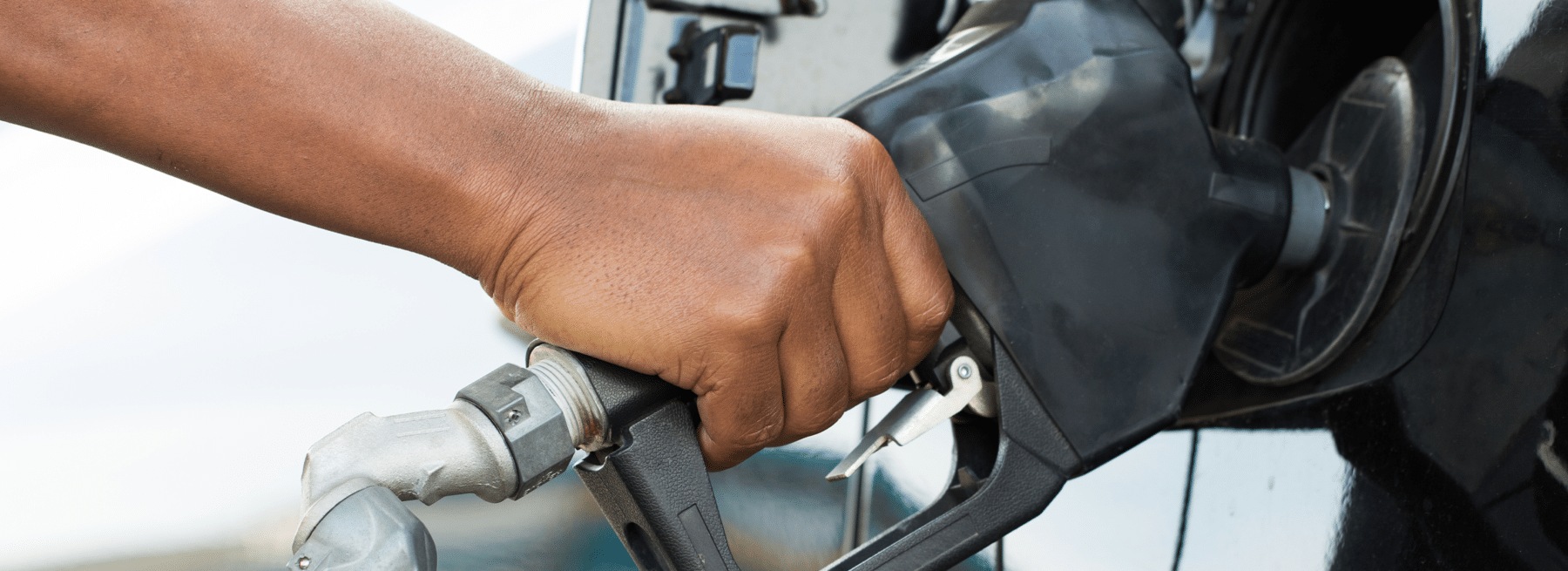Businesses with many vehicles have contended with skyrocketing catalytic convert thefts. Unfortunately, there’s another theft that’s growing and that’s fuel theft. Many organized crime rings have been behind the catalytic converter thefts. It turns out there are gas theft rings as an NBC News story reveals.
A gas theft ring in Florida consisting of six men stole at least $60,000 worth of fuel from stations. They’d resell the fuel for half the price. Fuel theft became such a huge problem that the police created Operation Empty Tank as the result of two gas stations ending up with $25,000 in fuel shortages.
Thanks to surveillance cameras, the sheriff’s office discovered a group of seven trucks pumping fuel from a single gas pump for more than 12 hours. They’d break into the gas stations and use homemade devices that disabled the tool that calculates the cost of the fuel.
How Fuel Theft Happens
It’s not surprising that fuel theft is climbing. Gas prices have hit record highs after Russia invaded Ukraine. Fuel theft is happening all over North America. Criminals are getting creative in how they pull it off. They are using a variety of tactics to steal fuel. Everything from the simple drilling of a hole in the fuel tank to a sophisticated process like the aforementioned trucks pumping fuel for hours. Then, there are these stories.
A gas station in Texas lost $27,000 worth of gas in just a few months according to a CNN story. The owner believes the thief works for a gas dispenser company. Another gas station had its fuel stolen when crooks parked a minivan over a station’s underground fuel tank. The van had a trap door. They opened the trap door and tapped into the tank to take 1,000 gallons of fuel.
In Florida, investigators arrested two suspects who had fake credit or debit cards and used devices to steal the gas. Crooks took almost 400 gallons of gas in North Carolina by bypassing the payment system. Apparently, they relied on a contraption at the pump to get gas for free. Then, more vehicles followed them and filled the tanks to steal $1,600 worth of gas.
If you follow this blog, you’ll notice a lot of mention of brazen thieves. The CNN report tells the story of how suspects drilled a hole in a gas tank of a parked vehicle in broad daylight with the victim inside! Another suspect was caught on camera walking around with a drill and a bucket.
The only way to steal fuel out of newer cars is by drilling a hole. That’s because newer vehicles have a valve that prevents gas from being siphoned and from spilling in a car accident.
5 Ways to Deter Fuel Theft
Gas stations aren’t the only ones affected by fuel theft. Automotive dealerships, construction sites, manufacturing facilities, and places with large volumes of gasoline can also be targets. Here are five ways to help protect your fuel.
1. Know about the fuel theft threat
Reading this article is a great start in understanding the severity of the fuel theft problem. Learn about the different methods criminals use to steal fuel. This helps you put up barriers to help prevent this from happening.
Stay on top of fuel theft trends. Check police and media reports about fuel theft. Communicate with other companies in the industry, especially those in your location. Knowledge is power.
2. Review crime trends in your area
As stated before, information is valuable. Contact your local police to find out what’s trending and what they recommend.
Study the crime statistics in your company’s general area to identify how many and what kind of crimes occur in your area. Visit the FBI’s National Incident-Based Reporting System (NIBRS), which has an interactive map based on data from local police departments. The map shows the crime rate and the types of crime happening based on location.
3. Look into fuel marking
Fuel marking is an authentication method to fight fuel theft and manipulation of fuel. This helps governments and organizations verify their fuel supply comes from legal sources and follows local or national standards. Along with fuel marking, post signs and stickers about their presence. Criminals familiar with the technology know this can be traced to them and has a high conviction rate.
4. Add perimeter security
Perimeter security means taking steps to protect the area around the property. The purposes of perimeter security are to keep intruders out, reduce crime, and maintain safety. It does more than protect the business and its assets. Perimeter security also addresses the areas outside of the facility such as the loading docks, pedestrian traffic, parking lot or garage, and landscaping.
You have a variety of options to secure the perimeter. The smartest thing to do is have multiple options because multilayered security can maximize protection. For example, a trespasser can easily bypass a barbed-wire fence by cutting the wire. The same can occur in other types of fences. If you do have a fence, check it regularly to make sure it remains intact. Gates are another form of physical perimeter security especially if you have everyone enter and exit in one place at the gates.
Perimeter security has advanced to add stronger layers of security. That’s because there is more to it than putting up physical barriers to secure the perimeter. Technology can help protect the perimeter and fortify security.
5. Install remote video surveillance
Studies show video surveillance systems are proactive in that they can deter crime and help catch criminals. At the University of California Berkeley Law, Jennifer King and her colleagues have conducted a six-month study of the San Francisco Community Safety Camera Program. The study has found the presence of cameras leads to a large drop in property crimes.
Intruders may not see the cameras. That’s why it’s important to post signs around the property indicating the area is under surveillance.
The Urban Institute did a report on the use of public surveillance cameras to deter crime. The study shows that after installing a video surveillance system, Baltimore’s crime rate fell by more than an average of 30 incidents per month.
Moreover, the Mayor of Chicago added security cameras around the city for safety. This led to a drop in crime by almost 12 percent. The average monthly incident of violent crime dropped by 20 percent and robbery dropped by one-third. The city says video surveillance made these decreases possible.
The Urban Institute study proved it’s important to include monitoring services with video surveillance. Crime did not change in one neighborhood in Chicago. That’s because residents didn’t think anyone was watching the cameras. In other words, video surveillance without monitoring doesn’t deter crime as much as those with monitoring. Therefore, when investing in remote video surveillance, you want to post “area under surveillance” signs to let people know someone is monitoring the cameras.
The Value of Remote Video Surveillance
Remember thieves are more brazen. Some states have laws that don’t allow police to engage in pursuits. Security guards can’t do that either. Many companies are telling their employees to stay away from crimes in progress and don’t try to be a hero.
This is why more and more companies invest in security technologies like video surveillance with remote monitoring. The big advantage video surveillance with virtual monitoring has over security guards and traditional alarm systems are that trained monitoring operators can act in suspicious situations without fearing for their lives. They’re not located in your business. They can alert the intruder on an on-site audio speaker.
Video surveillance involves a security specialist designing a security system based on your business and property. They will install high-definition video security cameras in strategic locations around the business to ensure monitors can see the entire property. The high-definition video cameras and video recordings will be able to make out faces, license plates, and other information to help make an arrest.
Recall that multiple layers of security are effective in helping to stop crime. Live video surveillance alone contains multiple layers of security. First, there’s the presence of the cameras. Some trespassers turn around upon seeing the cameras and signs indicating the property is under surveillance. For the brazen ones who aren’t easily scared, the trained monitoring operators watching the cameras can communicate with them via on-site speakers.
If the suspects continue to advance, then the monitoring operator can call the police while tracking the intruders’ movements. In talking to the emergency operator, the trained security professionals can report everything they see and any details to help the police. Unlike security guards, the trained monitoring operators and the video cameras can view the entire property at once.
Video surveillance is a proactive security solution. Traditional security systems are reactive because they don’t do anything until something happens first. By the time they realize something has happened, it’s often too late. Remote video surveillance can spot things before anything occurs or while it’s occurring. This partnership of cameras, video analytics, and monitoring operators has a better chance of catching the suspects.
Video surveillance with monitoring can do more than avert crime. Security cameras can help with liability claims and identify opportunities for enhancing operations. It’s very hard to win liability cases without proof. You can have that in the video recordings.
Every industry has different requirements for effective remote video surveillance. The first step is to find a security company experienced in your industry. When you do that, you’ll have a good chance of optimizing your investment and getting a fast return.
To learn more about video surveillance with remote monitoring, pick up this guide on Security Systems 101. Please feel free to contact us with your questions.

